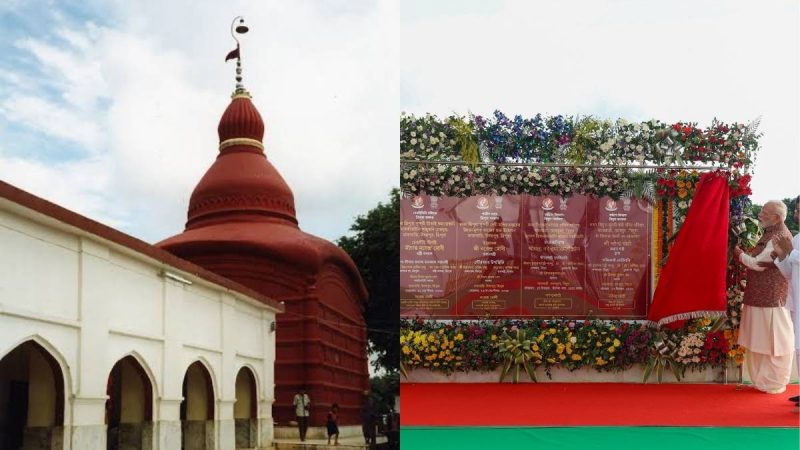When Prime Minister Narendra Modi walked through the Mata Tripura Sundari Temple Complex this week, he wasn’t just reviewing construction work. He was staking attention on one of the Northeast’s most treasured shrines, a place where myth, devotion, and centuries of history come together. The government’s plan is to make the temple more accessible and visitor-friendly and turn it into a gateway for discovering the cultural and natural beauty of Tripura.
PM Modi’s Visit Puts Spotlight On Mata Tripura Sundari Temple
Sitting on a low hill in Udaipur, about 55 kilometres from Agartala, Matabari, as locals fondly call it, carries weight far beyond its modest size. It is one of the revered 51 Shakti Peethas, spots sanctified in legend where the body parts of Goddess Sati fell as Lord Shiva roamed the earth in grief. Here, it is believed, her right foot touched the ground, making this land sacred for followers of Shakti.
Recently, Prime Minister Narendra Modi visited the temple and took to X to express his emotions. “Reviewed the works at the Mata Tripura Sundari Temple Complex. Our emphasis is on ensuring more pilgrims and tourists pray at the Temple and also discover the beauty of Tripura,” he wrote.
The temple dates back to 1501, built under the Manikya dynasty’s Maharaja Dhanya Manikya. The story goes that the king had set his sights on a Vishnu shrine, but a dream changed everything. The goddess appeared, directing him to raise a temple in her honour. Obedient to that vision, an idol of Tripura Sundari, carved from dark Kasti stone and carried all the way from Chittagong, was placed in the sanctum.
Its structure is a classic of Bengali Ek-Ratna design: a square sanctum capped with a pyramidal roof. The temple sits atop a hillock whose hump resembles a tortoise, earning it the name Kurma Pitha, a shape held in special regard in Shakta traditions. Step inside and two stone figures greet you: the main deity, a five-foot idol of Tripura Sundari herself, and beside her, Chhota Ma, a smaller, two-foot image identified with Goddess Chandi.
Also Read: This 68-YO Temple In Mumbai, Dedicated To Nag Devi, Is Believed To Be A Wish Fulfilling Temple
A Sacred Shakti Peetha With Deep Mythological Roots
For Tripura, the temple is not only sacred ground but also a beating cultural heart. People from across communities, like Hindus, tribals, and even those outside the faith, gather here, especially when the big festivals arrive. Diwali transforms the site into a fairground as tens of thousands throng to the Matabari mela. Navaratri and Lalita Jayanti follow, each layering fresh colour and music onto the space.
Behind the temple stretches Kalyan Sagar, a vast water tank where worshippers feed turtles considered holy. These “Bostami” turtles, some centuries old, glide in the water as part of the temple’s living heritage.
Modi’s visit placed attention not only on the sanctity of the site but also on its future. Better pilgrim facilities, stronger infrastructure, and smoother access are all part of the plan. For Tripura, it is recognition that Matabari draws as many visitors as any shrine in the Northeast and can anchor tourism in the state.
The temple has stood for over five centuries. Its next chapter may be written not just in prayers and offerings but in how it balances preservation with the surge of devotees and curious travellers. If the government’s plans take shape, Mata Tripura Sundari could become both a spiritual centre and a doorway to the landscapes and stories of Tripura itself.
Cover Image Courtesy: narendramodi/X and soman/Wikipedia

